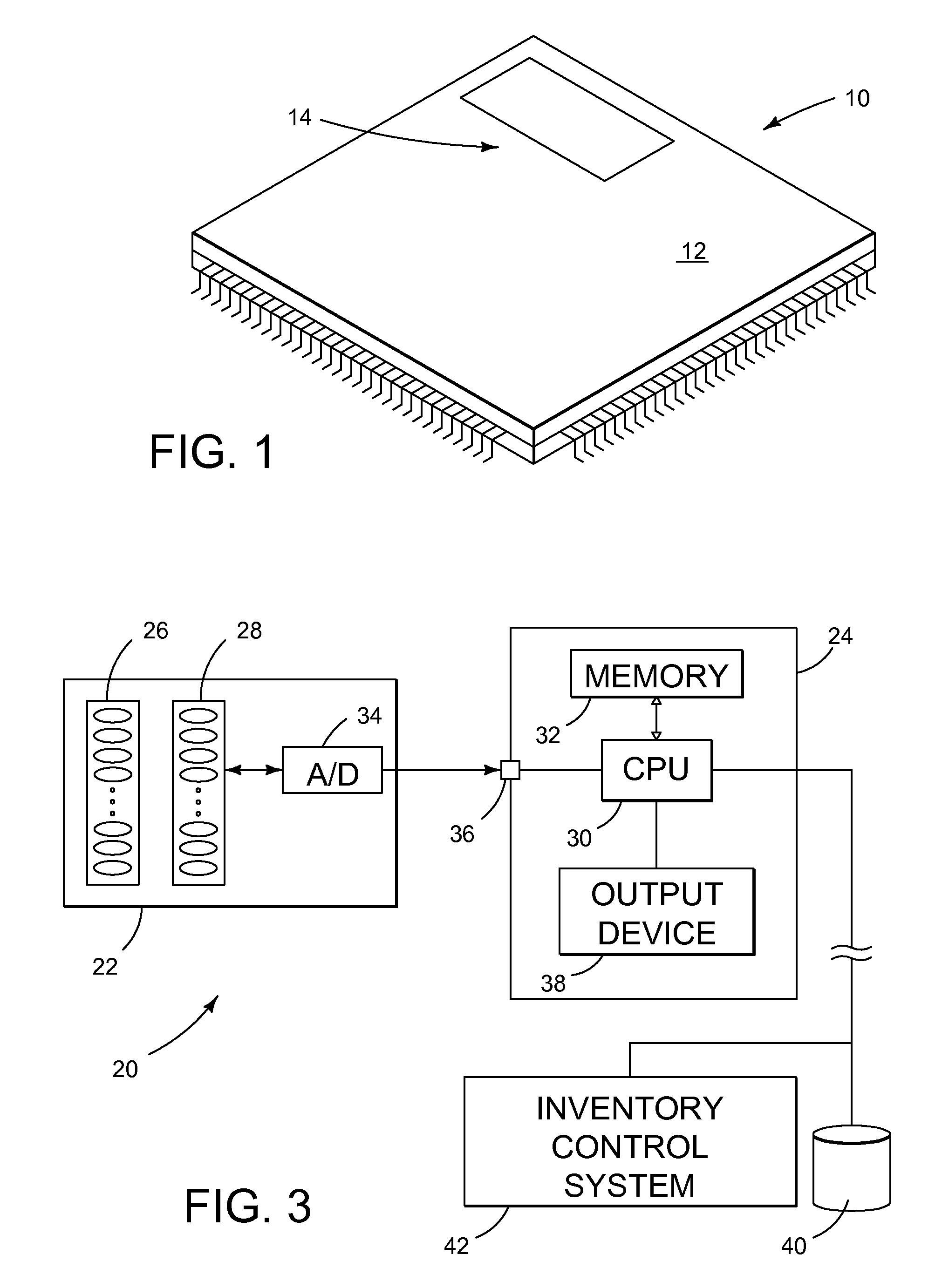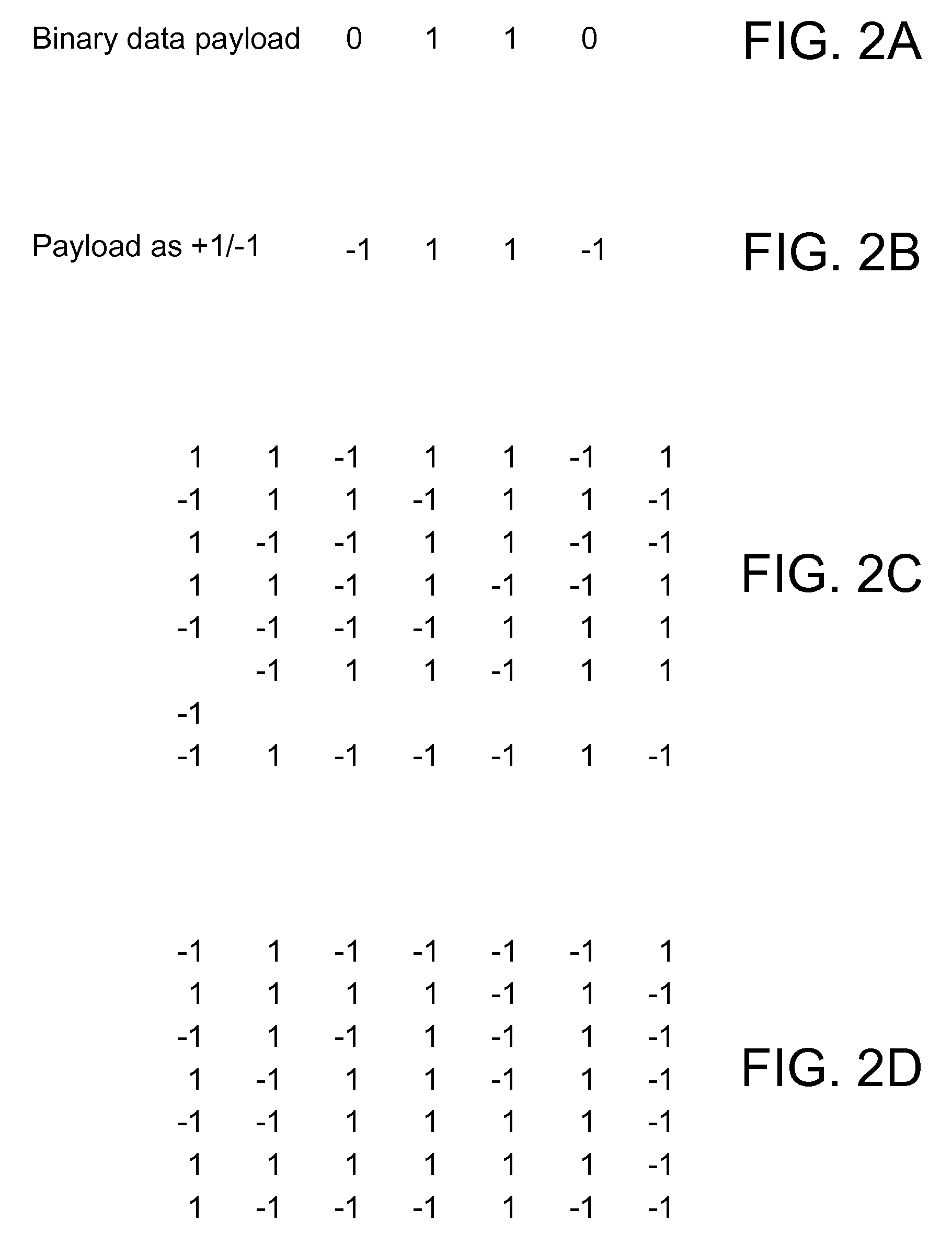Methods and tangible objects employing machine readable data in photo-reactive materials
a technology of photo-reactive materials and machine readable data, applied in the field of methods and tangible objects employing machine readable data in photo-reactive materials, can solve the problems of many enterprises suffering from fraudulent product substitution, chips with lower speed ratings, and failure to meet the more demanding spec under some extreme operating conditions. , to achieve the effect of chip inspection
- Summary
- Abstract
- Description
- Claims
- Application Information
AI Technical Summary
Benefits of technology
Problems solved by technology
Method used
Image
Examples
Embodiment Construction
[0025]Referring to FIG. 1, an integrated circuit 10 includes an exterior housing, or package 12. The housing can be formed in numerous ways. One is by injection molding. Another is by known ceramic-shaping techniques. At some point prior to shipment, the surface micro-topology of an area 14 on the housing is shaped in a seemingly random manner. (The area 14 can span the entire housing, if desired.) In the preferred embodiments, the patterning is substantially uniform across its extent, and may look like pebbling, mottling, graininess, or roughness. Yet this seemingly random surface conveys plural-bit digital information.
[0026]In an illustrative production cycle, a semiconductor wafer is processed to form several integrated circuits. Testing is conducted to determine the speed rating (or other grade) of each circuit. (The testing can be done while all the circuits are still on the wafer, or after the wafer has been diced into dies, or after the dies have been packaged in a housing.) ...
PUM
| Property | Measurement | Unit |
|---|---|---|
| size | aaaaa | aaaaa |
| size | aaaaa | aaaaa |
| speed ratings | aaaaa | aaaaa |
Abstract
Description
Claims
Application Information
 Login to View More
Login to View More - R&D
- Intellectual Property
- Life Sciences
- Materials
- Tech Scout
- Unparalleled Data Quality
- Higher Quality Content
- 60% Fewer Hallucinations
Browse by: Latest US Patents, China's latest patents, Technical Efficacy Thesaurus, Application Domain, Technology Topic, Popular Technical Reports.
© 2025 PatSnap. All rights reserved.Legal|Privacy policy|Modern Slavery Act Transparency Statement|Sitemap|About US| Contact US: help@patsnap.com


